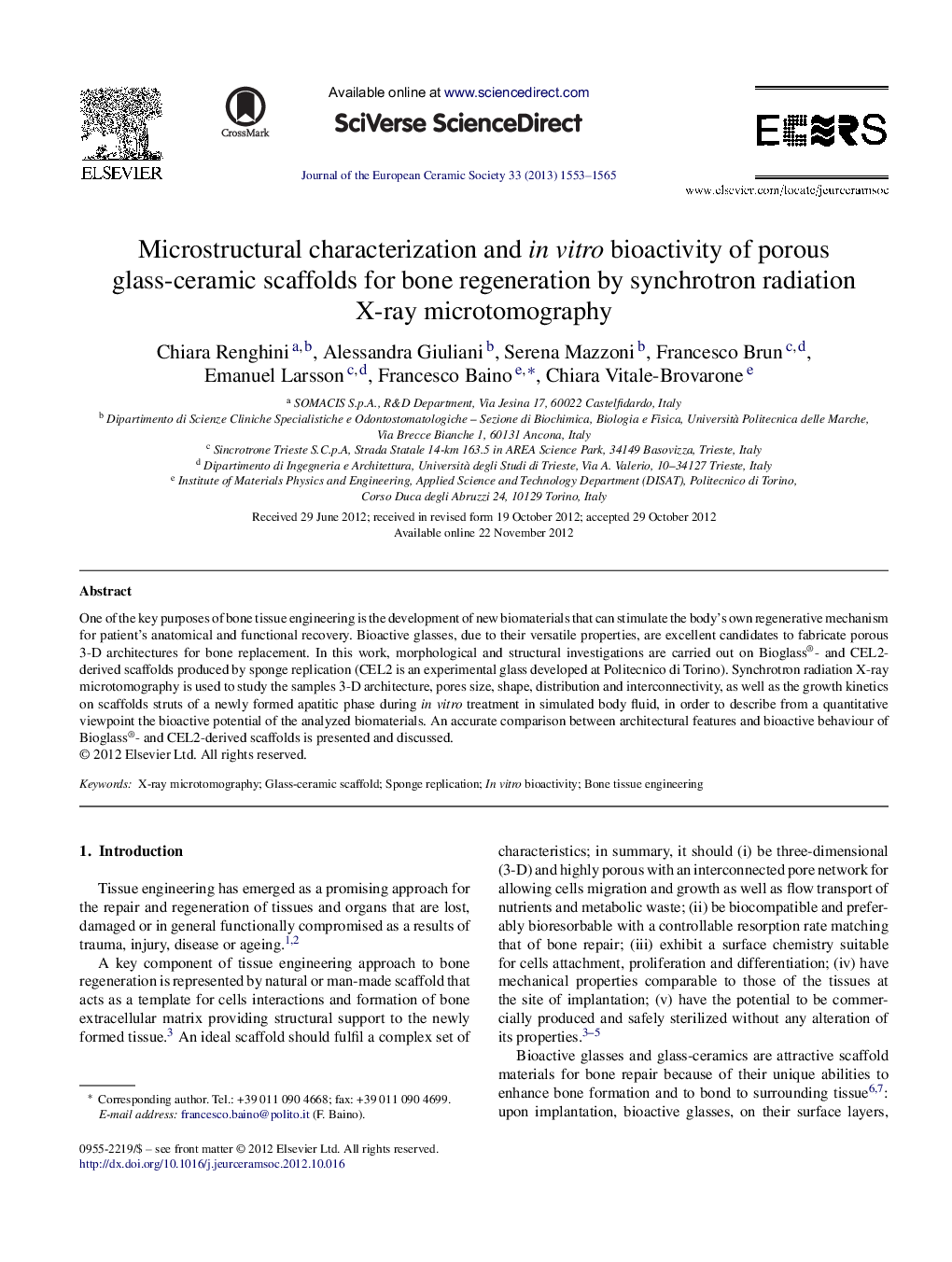| Article ID | Journal | Published Year | Pages | File Type |
|---|---|---|---|---|
| 1475580 | Journal of the European Ceramic Society | 2013 | 13 Pages |
One of the key purposes of bone tissue engineering is the development of new biomaterials that can stimulate the body's own regenerative mechanism for patient's anatomical and functional recovery. Bioactive glasses, due to their versatile properties, are excellent candidates to fabricate porous 3-D architectures for bone replacement. In this work, morphological and structural investigations are carried out on Bioglass®- and CEL2-derived scaffolds produced by sponge replication (CEL2 is an experimental glass developed at Politecnico di Torino). Synchrotron radiation X-ray microtomography is used to study the samples 3-D architecture, pores size, shape, distribution and interconnectivity, as well as the growth kinetics on scaffolds struts of a newly formed apatitic phase during in vitro treatment in simulated body fluid, in order to describe from a quantitative viewpoint the bioactive potential of the analyzed biomaterials. An accurate comparison between architectural features and bioactive behaviour of Bioglass®- and CEL2-derived scaffolds is presented and discussed.
